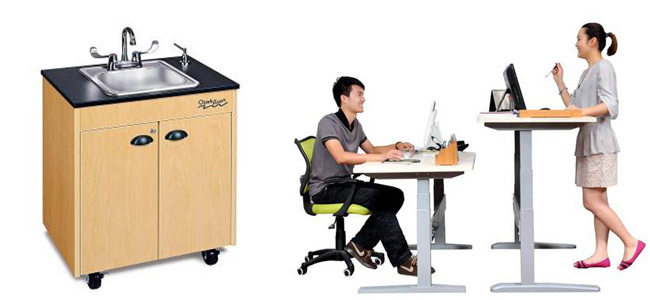Digital Crayon: Flexible Furniture Design
In Article 2 we discussed key concepts to consider when designing flexible schools. Article 3 delved into key building technologies that help spaces adapt more easily to a wide variety of uses. In this article we will look at the final piece of the puzzle: furniture and how it can support the flexible use of space.
As we discussed in Article 1, schools are moving towards a learner–centered approach, recognizing that schools must provide multiple ways to access learning. The days when students sit in row upon row of tablet chairs and listen to the teacher lecture for hours are numbered. Classrooms tend more to be used in a variety of ways: lecture, seminar, group work and/or circle. Each modality requires a different setup. However, much of the furniture found in schools these days does not easily adapt itself to these different configurations. Below we look at the factors to consider when selecting flexible furniture.
- Reconfigurable – look for furniture that can be used in a variety of settings. In general, tables provide more flexibility than desks as they often have flat tops and shapes that nest into a wide array of configurations. Furniture that can be adjusted for height provides maximum comfort for its users. Upholstered chairs with fold-away tablets allow for computer and writing work to occur in a social setting.
- Movable – Make sure the furniture is lightweight so that it can easily be moved. For larger pieces, consider furniture with wheels.
- Stackable – There are times when you might want to remove the furniture completely from the space. If this is the case, make sure the furniture is stackable as well as movable.
- Compatible – Almost all learning spaces need to be supported by technology these days. Make sure the furniture you select has adequate wire and power management features if required.
In touring schools, we often take note of the kind and arrangement of the furniture. It often speaks volumes as to the style of instruction for a particular educator. Unfortunately it may also mean that the furniture is too heavy to move or it just doesn’t work in alternative arrangements.

Because the planning, design and construction of new educational space takes a long time, we are often asked by school leaders: What can we do in the meantime to improve the educational experience? Our answer is often to consider purchasing new (lightweight, reconfigurable) furniture. This kind of furniture allows the user to transform their learning environment on a regular basis. Newer furniture is often smaller in scale and works better in smaller spaces. All in all, purchasing the right furniture can have a huge impact on the educational experience at a reasonable cost. And, in addition to a rapid depreciation schedule, it is also an investment that can be reused in a new space once complete.
Learn more about Digital Crayon’s author, Education Architect and Managing Principal,
David Epstein, AIA, LEED AP